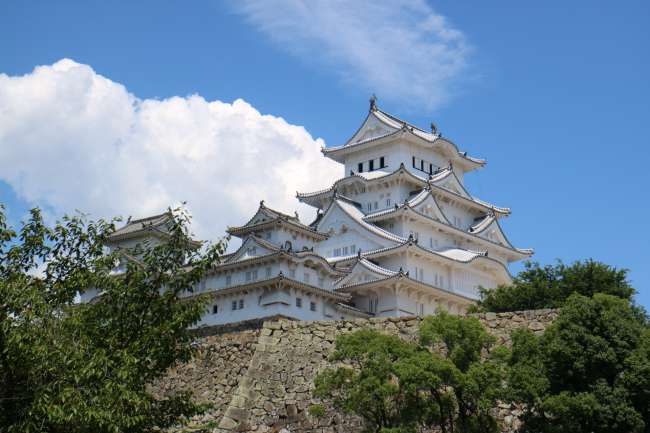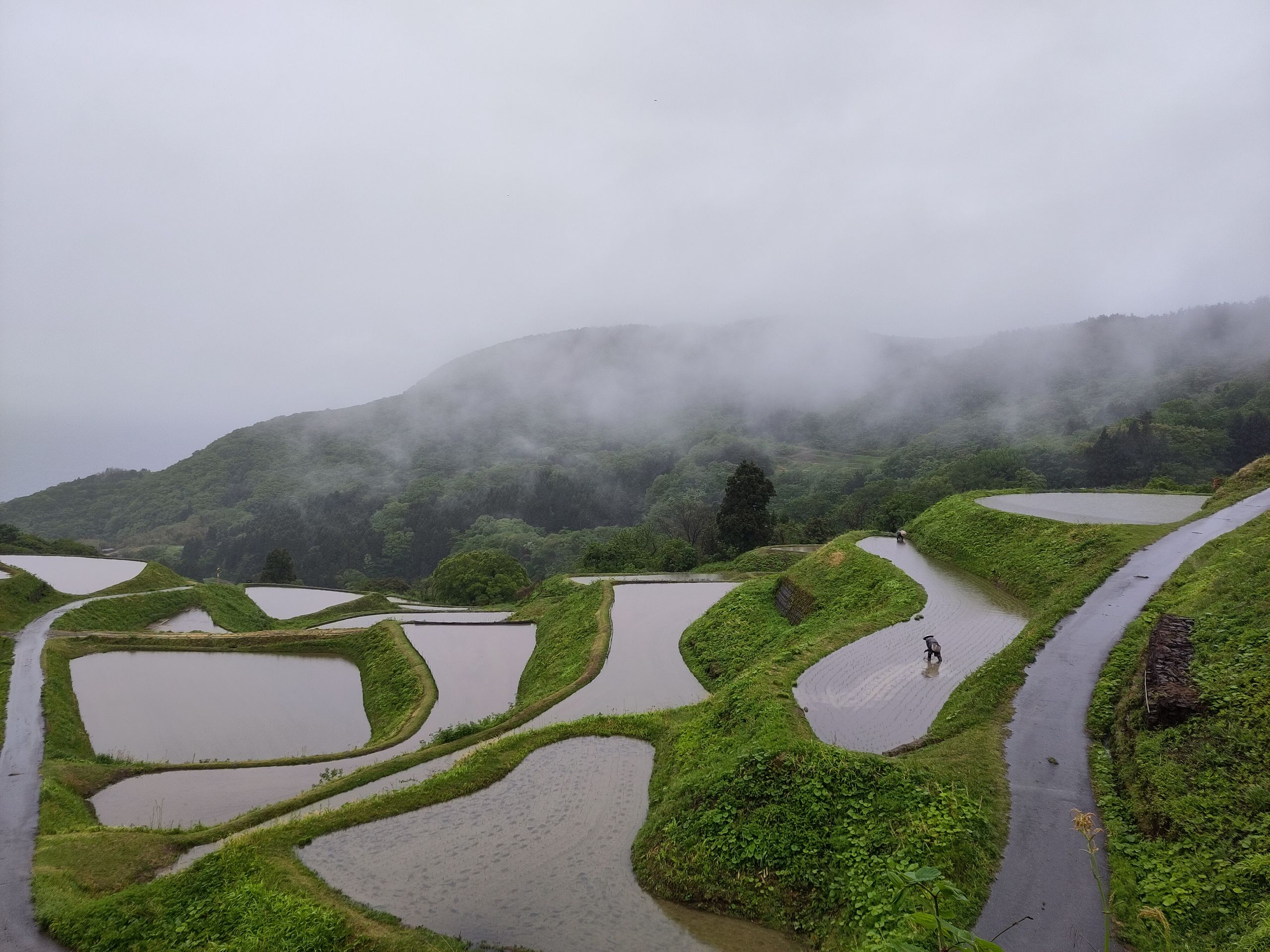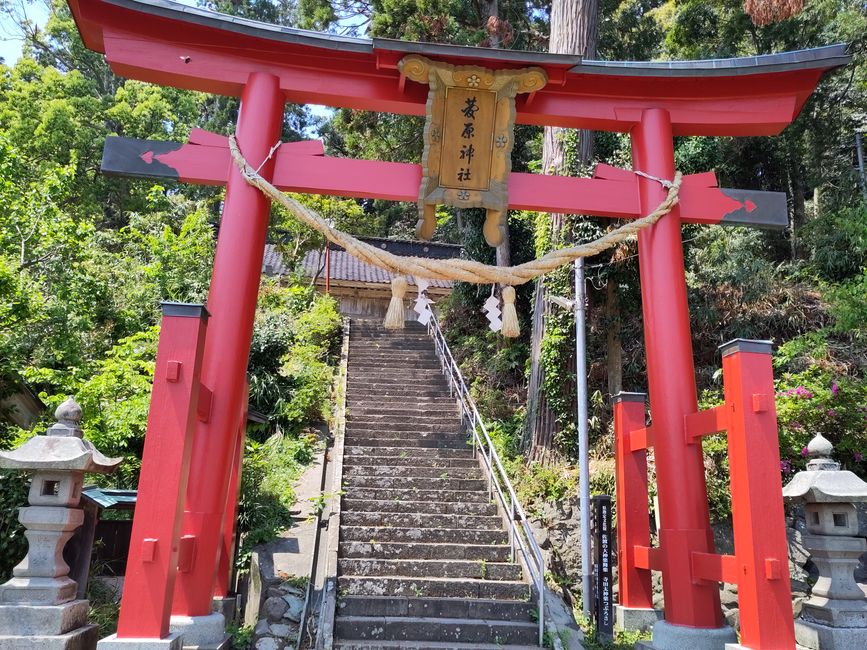
umweltcamp-in-sado-japan
vakantio.de/umweltcamp-in-sado-japan
Sado - Bambooforest and day off
Naipablaak: 27.05.2023
Today, we meet at 9:30 in front of the temple and divide ourselves to clean and tidy up the communal areas. I'm assigned to the kitchen, and about an hour later, everything is wiped down, and the floor is vacuumed. For the rest of the day, we help Keiko, the mother of the monk who owns the Koninji Temple, to clear fallen bamboo trees from a bamboo forest. The trees often fall during winter because they can't bear the weight of the snow. Each of us receives a saw and cuts the damaged trees about a meter above the ground. Then we trim off all the small branches, and the bare trunks are carried to the temple to be used for making garden furniture. Keiko, despite being 82 years old, is still quite fit and effortlessly carries a five-meter-long bamboo trunk up the hill by herself. We work for about two to three hours with a lunch break in between and then transport the cut branches to the campsite. The next day, a school class arrives for a three-day stay, and they will be accommodated in tents. Since the ground in front of the tents is quite muddy, we cover it with the branches to make it easier to walk on. After we finish everything, we take a leisurely stroll around the temple's surroundings, and then I enjoy the first sunny day since my arrival by sitting in the garden and reading.
On Wednesday, we have a day off to make up for Sunday. We decide to walk down to the town and visit a temple, shrine, and the harbor. The descent takes about an hour, but with such a magnificent view, it doesn't feel long, and it's all downhill. The shrine is rather small but has the characteristic large red gate typical of shrines. The Buddhist temple also has a gate at the bottom, although slightly larger and in brown. On the way back up, there are wooden animal figures placed on the sides. The temple garden itself is not very exciting and kept simple, so we head back toward the town to find something to eat. Since Hamochi is not a major port city, there aren't many restaurants or food stalls available. Therefore, we have to rely on snacks from the supermarket and convenience store. With our packed lunch, we walk for about another hour to the harbor and sit on a bench there. On the way back, we ask Nozomi, the project coordinator in Sado, if she can pick us up on the way down so we can save ourselves the uphill journey. This is because there is a scheduled lecture on marine pollution in the community center in Hamochi, as the school class arrived this afternoon. After dinner, we attend the lecture, and while I've heard many things before, such as light and noise being considered pollution that harms animals that rely on sound waves for orientation or moonlight for navigation, there are still some new pieces of information. For instance, I learn that the tanks in regular ship operations are simply rinsed with seawater, resulting in a significant amount of oil entering the sea. At the end of the lecture, we receive information about the schedule for the next three days, and then we head back up to the temple.
On Wednesday, we have a day off to make up for Sunday. We decide to walk down to the town and visit a temple, shrine, and the harbor. The descent takes about an hour, but with such a magnificent view, it doesn't feel long, and it's all downhill. The shrine is rather small but has the characteristic large red gate typical of shrines. The Buddhist temple also has a gate at the bottom, although slightly larger and in brown. On the way back up, there are wooden animal figures placed on the sides. The temple garden itself is not very exciting and kept simple, so we head back toward the town to find something to eat. Since Hamochi is not a major port city, there aren't many restaurants or food stalls available. Therefore, we have to rely on snacks from the supermarket and convenience store. With our packed lunch, we walk for about another hour to the harbor and sit on a bench there. On the way back, we ask Nozomi, the project coordinator in Sado, if she can pick us up on the way down so we can save ourselves the uphill journey. This is because there is a scheduled lecture on marine pollution in the community center in Hamochi, as the school class arrived this afternoon. After dinner, we attend the lecture, and while I've heard many things before, such as light and noise being considered pollution that harms animals that rely on sound waves for orientation or moonlight for navigation, there are still some new pieces of information. For instance, I learn that the tanks in regular ship operations are simply rinsed with seawater, resulting in a significant amount of oil entering the sea. At the end of the lecture, we receive information about the schedule for the next three days, and then we head back up to the temple.
Sungbat

Dagiti report ti panagbiahe Hapon

